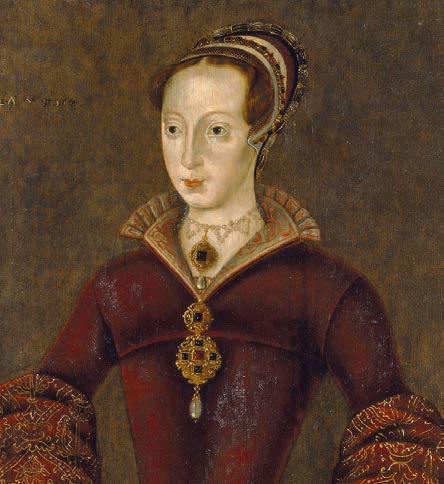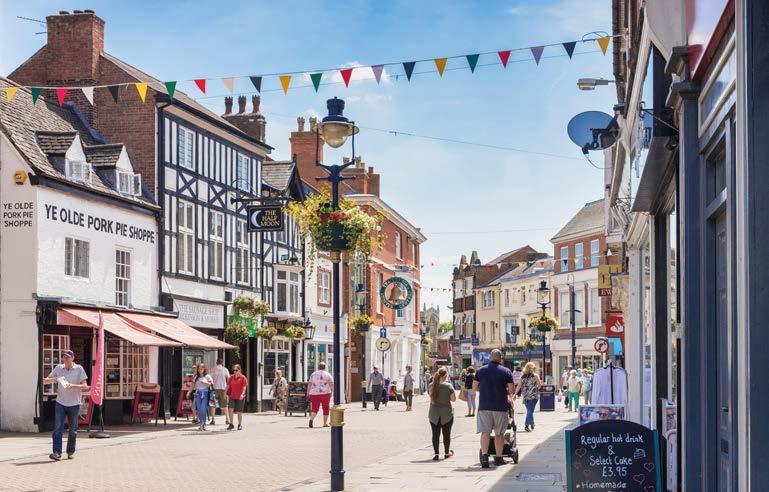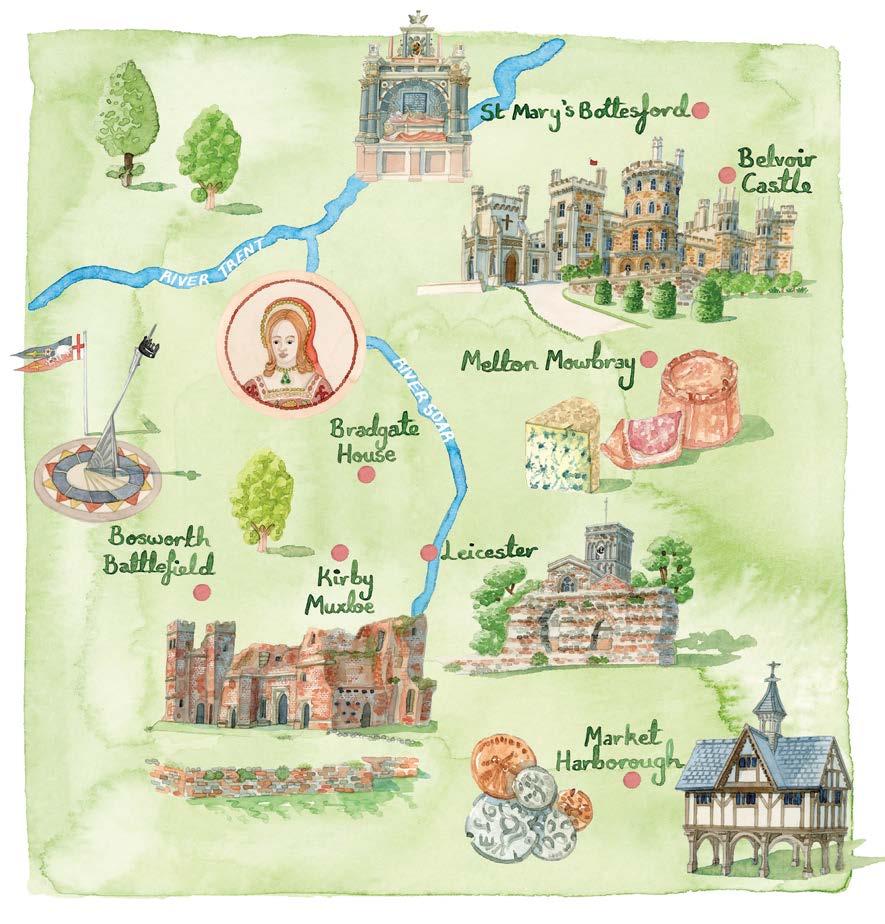
9 minute read
HEART OF ENGLAND
Heart of of England
From the astonishing discovery of Richard III’s remains to Iron Age treasure and tales of witchcraft, the unassuming county of Leicestershire is full of surprises
WORDS CATHERINE JONES

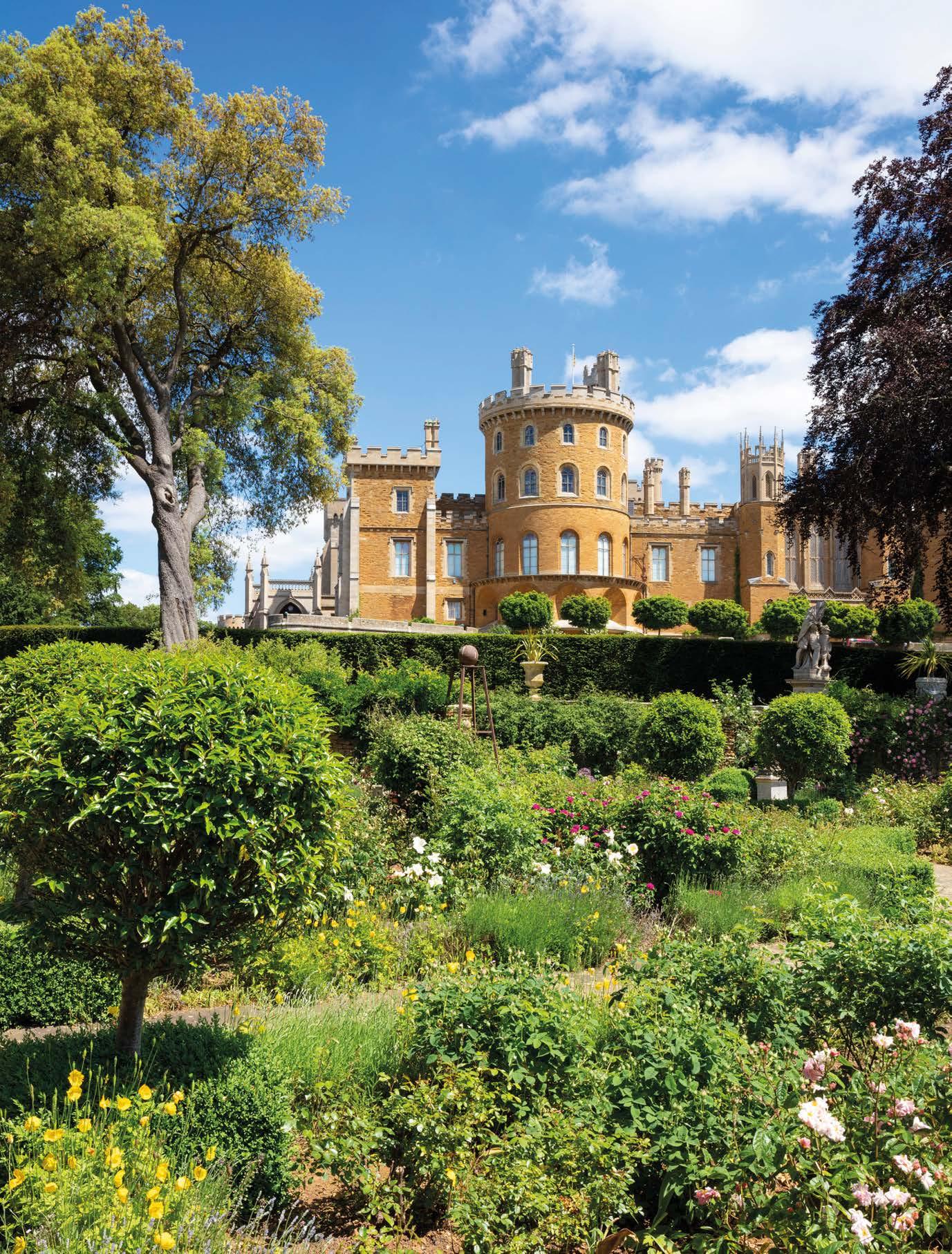
On a Monday morning in early July 1841, 500 people gathered in high spirits on the concourse at Leicester’s recently opened Campbell Street Station to embark on a very special outing. They were accompanied on their chartered train by a band and greeted by waving onlookers as they steamed the 10 miles to nearby Loughborough where they found their destination festooned with flags. The day trip at a shilling a head had been organised by a local printer and Baptist missionary called Thomas Cook. And although he didn’t know it at the time, that short journey through the Leicestershire countryside – a journey you can still enjoy today on the Great Central Railway heritage line – was the start of modern package tourism. Cook went on to forge a global travel empire. But he may have been astonished at the treasures to be found much closer to home. From kings to Vikings, Iron Age forts to medieval churches, and Roman roads to romantic ruins, the history of this often-overlooked corner of the East Midlands is as rich and filling as one of its famous Melton Mowbray pork pies.

Previous page: The Sundial Memorial at Bosworth Battlefield Clockwise, from left: Belvoir Castle; King Richard III; the Roman Jewry Wall ruins
One of the area’s greatest historical treasures was only uncovered 10 years ago when the remains of Richard III were miraculously discovered under a council car park in the heart of Leicester. The last Plantagenet monarch, slain on the battlefield at nearby Bosworth, had lain, un-mourned, in an unmarked grave for more than 500 years. Richard’s remains have been reinterred beneath a simple but striking tomb in the nave of Leicester Cathedral (closed for development works throughout 2022), while a modern visitor centre now stands on the site of his original resting place, where you can unpick the complexities surrounding the turbulent Wars of the Roses along with learning about Richard’s life, death and incredible rediscovery. Meanwhile the Bosworth Battlefield, 13 miles west of the city, boasts a fascinating heritage centre with hands-on activities. Leicester always remained loyal to the Yorkist cause embodied by Richard. But there is much more to Leicestershire than simply a dead king and a 15th-century battlefield. Nestled between seven neighbouring counties and flanked by industrial heartland to the west and Lincolnshire wolds to the east, Leicestershire’s story reflects its important role across two millennia.

For more on Britain’s historic attractions, see www.britainmagazine.com

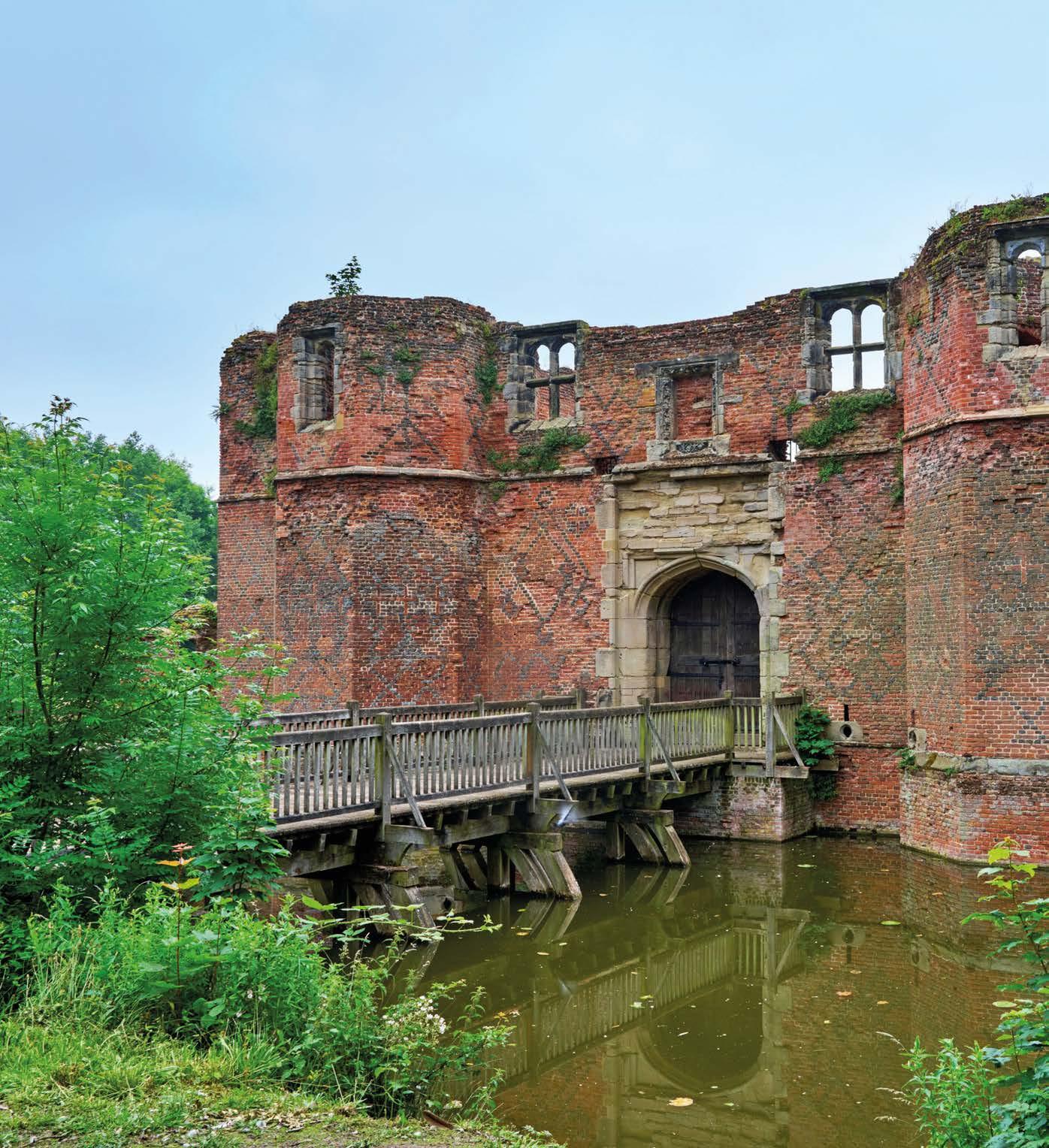






Left to right:The remains of Kirby Muxloe Castle; the Hallaton helmet
JEREMY ALAN BAXTER/ALAMY/LEICESTERSHIRE COUNTY COUNCIL MUSEUMS © IMAGES: In fact, not only is it at the heart of some key moments in British history, but the geographical centre of England is in Leicestershire, with recent calculations pinpointing a spot near Fenny Drayton in the southwest of the county.
You can get a sense of Leicestershire’s early history at the Burrough Hill Iron Age Fort, perched on a dramatic limestone hill at Somerby near Melton Mowbray. Meanwhile at Harborough Museum, housed in a former corset factory in picturesque Market Harborough, you can marvel at the Hallaton Treasure, a dazzling collection of Iron Age silver and gold coins and a silver-gilt Roman cavalry helmet.
The treasure dates from the 1st Century AD when the Romans also arrived, criss-crossing the county with paved roads – the important 200-mile arteries of Watling Street and the Fosse Way meet at High Cross near Claybrooke Magna – and settling at what they called Ratae Corieltauvorum, the Roman name for modern Leicester.
They built a garrison town with a forum and market hall, and while most of Roman Leicester lies deep below its modern-day cityscape, the remains of its public baths can be seen at the imposing Jewry Wall, a 30ft-tall structure which originally formed the entrance to the bath complex; the revamped Jewry Wall Museum is set to reopen in 2023.
Later the Vikings too left their mark on the landscape, with Leicester one of the ve main sites in Danish Mercia and the county dotted with settlements ending in the Viking suf x ‘by’ – places like Dalby, Ashfordby and Rearsby.
If the Richard III story is one jewel in Leicestershire’s historic crown, then another is undoubtedly the fairytale Belvoir Castle, which occupies a promontory overlooking the beautiful Vale of Belvoir (pronounced ‘beaver’) in the north of the county. Belvoir has been the ancestral home of the Dukes of Rutland since the land was rst gifted to Norman baron Robert de Todeni by William the Conqueror.
The current castle, designed by the proli c Regency neo-Gothic architect James Wyatt, with a dramatic skyline of towers, turrets and crenellations, is the fourth to stand on the same spot since 1067. Its magni cent grounds include the tranquil and elegant Duchess Garden, the Japanese woodland, the seven-acre Hermit Garden with its recently rediscovered Regency grottos, and the restored Capability Brown parkland.
While Belvoir remains a family home, the ruins of the 15th-century Kirby Muxloe tell the poignant story of a house that was never lived in. Construction on the red-brick moated mansion – now under the care of English Heritage – was started in 1480 by William, Lord Hastings, who held a powerful place in the court of Edward IV.
When Edward died in 1483, Hastings backed the appointment of Richard, Duke of Gloucester as Protector to his nephew, the young Edward V. Hastings was on good terms with Richard, but all was not as it seemed. When Hastings attended what he believed was a routine council meeting called by Richard in the Tower of London, he was arrested on a charge of conspiracy and swiftly executed without trial. Kirby Muxloe remains unfinished to this day.
The remains of Bradgate House, northwest of Leicester, tell another tragic tale. Bradgate was the birthplace and childhood home of Lady Jane Grey, daughter of the Duke
Clockwise, from right: A portrait of Lady Jane Grey; Dickinson & Morris’s Ye Olde Pork Pie Shoppe in Melton Mowbray; tomb of Francis Manners, 6th Earl of Rutland at St Mary’s at Bottesford; St Mary de Castro Church in Leicester
THE PLANNER
GETTING THERE Leicester is served by regular trains on the Midland Main Line from London St Pancras (1hr). There are also direct services from Sheffield, Birmingham, Derby, Peterborough and beyond. www.thetrainline.com
WHERE TO STAY Live like a lord at Stapleford Park, a Georgian country house in a Capability Brown landscape near Melton Mowbray, or why not stay with a duke? Belvoir offers sumptuous bedrooms in the castle for special occasions like weddings, but also glamping in bell tents and shepherd’s huts on the estate. Alternatively, The Manor House at Quorn is a restaurant with 12 restful boutique bedrooms. www.staplefordpark.com; www.belvoircastle.com; www.themanorhouseatquorn.co.uk
WHERE TO EAT Enjoy home-grown food cooked with flair at Michelin-starred John’s House in Mountsorrel near Loughborough. Leicester is famous for its Indian cuisine and has its own annual Curry Awards. Try Mumbai Inn in the cultural quarter. Don’t leave the area without trying a Melton Mowbray pork pie; Dickinson & Morris have been baking them in the town since 1851. www.johnshouse. co.uk; www.mumbaiinn.co.uk; porkpie.co.uk
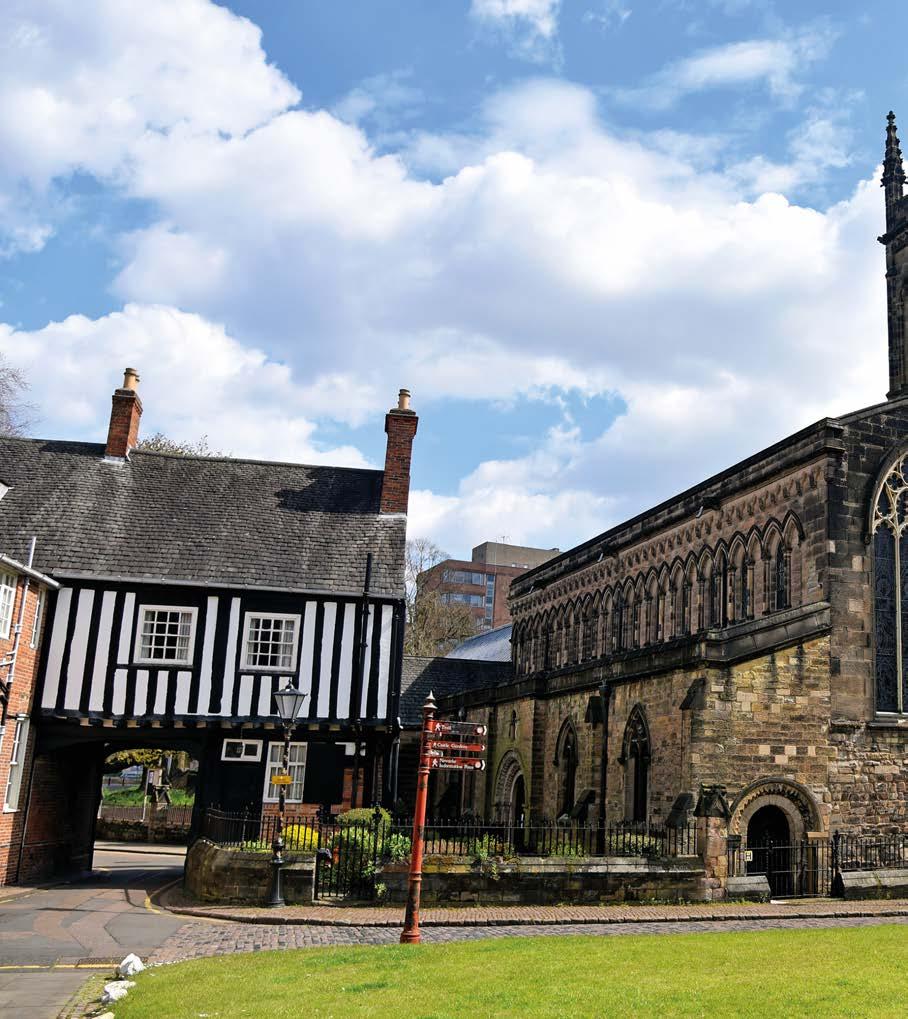
i
FURTHER INFORMATION www.visitleicester.info of Suffolk and great-granddaughter of Henry VII. A committed Protestant, she was named Edward VI’s successor by the sickly royal teenager, but after his death she famously ruled for only nine days before his sister Mary was proclaimed queen instead, and Jane met an untimely end in the Tower of London aged just 17.
The ruins, set in the stunning surroundings of the 830-acre Bradgate Park – where in medieval times deer roamed – are open on selected weekends throughout the year.
The county’s royal connections continue at Leicester’s important 12th-century, Grade I-listed St Mary de Castro Church where the four-year-old Henry VI was knighted in 1426. It’s also believed to be the marriage place of 14thcentury storyteller Geoffrey Chaucer.
In fact, there are fascinating finds waiting to be discovered in churches across the county: the 300-year-old finger pillory at St Helens in Ashby de la Zouch, which was reserved for those who disrupted services with their ‘indecorous behaviour’; the tomb at Gaddesby topped by a

sculpture of Edward Cheney, hero of the Royal Scots Greys and immortalised astride one of the four horses that died under him at the Battle of Waterloo; and, in St Mary’s at Bottesford, the final resting place of the 6th Earl of Rutland, with its decoration which tells the intriguing story of the Witches of Belvoir.
After Joan Flower and her daughters Margaret and Philippa were dismissed from the employment of the 6th Earl, the noble and his family fell ill, and both his male heirs died. The women were arrested, and while Joan passed away before trial, Margaret and Philippa were sentenced to death after they admitted consorting with a ‘familiar’, a cat called Rutterkin, and casting spells.
Theirs isn’t the only tale of strange happenings. In 1616, nine women from Husbands Bosworth were sent to the gallows for reputedly bewitching a young boy, while a century earlier there was a sensation in Market Harborough when a local woman, Agnes Bowker, was accused of having given birth to a cat. It’s less witchcraft than alchemy, however, behind one of Leicestershire’s greatest gifts to the world – Stilton cheese, which is reputed to have first been made by Frances Pawlett in the village of Wymondham 300 years ago. Long Clawson Dairy at Melton Mowbray is one of only six creameries in the world licensed to make the cheese; you can sample it at foodie favourite The Melton Cheeseboard. What better way to take a taste of this fascinating county home with you as a reminder of its riches?
